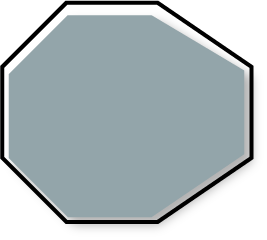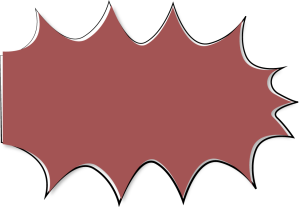Cognitive Load Theory: Structuring Learning Materials for Maximum Retention

One key focus of the instructional design process is structuring learning materials to best promote student success. No matter how measurable your learning objectives are or how well you scaffold them across a course or lesson, your students can’t excel in your course if the materials aren’t designed to maximize retention. But how do you do this? Or why would you bother? At the end of the day, aren’t students the ones ultimately responsible for their learning?
Although students are certainly responsible for engaging in their course materials, your ultimate goal as an instructor should be to create materials that appeal immediately to how students learn. Doing so doesn’t just simplify their lives; it prepares them to master course content.

This is where cognitive load comes in. Cognitive load theory is based on the idea that schemas (organized chunks of information) allow individuals to remember large amounts of information better. According to this theory, the difference between an expert and a novice is not that an expert is smarter or exceptionally more studied than a novice; rather, the difference is that an expert has developed schemas to help them remember content. Thus, the goal of instruction becomes helping novices develop these schemas. To do this, instructional materials should seek to reduce the amount of information that students must store in working memory so that they are more likely to retain important information long term. Three types of cognitive load impact your ability to structure learning materials in this way. They are:

Intrinsic: Intrinsic cognitive load is the idea that all instructional tasks have an inherent difficulty that you can’t necessarily alter. For example, 1 + 1 has a lower intrinsic cognitive load than advanced calculus because simple addition isn’t as difficult as calculus.

Extraneous: Unlike intrinsic cognitive load, you can alter extraneous cognitive load by the way you deliver content. The simplest way to control extraneous cognitive load is to include only information that is critical to the learning process. For example, including unnecessary pictures or graphics in PowerPoint presentations or other lecture materials results in extraneous cognitive load. Although these sorts of images often seem like a good idea, they actually split students’ attention and thus reduce the likelihood of retention. Think of extraneous cognitive load like busywork for your students. Although it keeps them doing something, it doesn’t necessarily add to the learning experience in a meaningful way. A presentation that includes only necessary information is much more likely to be effective than one that includes redundant or unnecessary pictures, graphics, and information.

Germane: Once you have eliminated extraneous cognitive load, you still have opportunities to arrange and enhance the remaining relevant content in ways that help students develop expert-level schemas. These strategies are the germane cognitive load. For example, in a PowerPoint presentation, you can increase the germane cognitive load by bolding key terms, color-coding information according to category, and loading dense slides one section at a time to keep students focused on smaller bites of information.
Essentially, when choosing or designing learning materials, you should evaluate the intrinsic cognitive load of the task, reduce extraneous cognitive load, and promote germane cognitive load without overworking your students’ working memory. You can’t necessarily do anything about intrinsic cognitive load, so focus on controlling extraneous cognitive load and supporting the development of schemas. Here are some ways to do this:
- Remove extraneous or redundant information.
- Place images near the content to which they refer.
- Combine multiple channels of content delivery so that they support and enhance one another (e.g., making sure an audio voiceover matches the slides currently on screen).
- “Chunk” and organize information into smaller, “bite-sized” pieces.
Let’s look at how this can play out in an online course. Say an instructor for an introductory finance course wants to develop a walk-through for analyzing financial statements. Because his students aren’t familiar with the content, the intrinsic cognitive load is relatively high. And because the instructor can’t change this type of cognitive load, he must focus on the extraneous and germane cognitive loads.
The instructor can address this issue of total cognitive load in several different ways. One solution is to use a screencast due to its ability to limit extraneous cognitive load. The instructor could record a narrated walk-through that focuses on examples of the different types of financial statements. To limit extraneous cognitive load, he could eliminate text, as including it could split his students’ attention between listening to the narration, following along with the text, and keeping up with the video. Instead, the narration (along with the movement of the cursor and other items on the screen) allows students to focus their attention on the content.
To promote germane cognitive load, the instructor could do something as simple as including a yellow circle around the mouse cursor to help indicate particularly important items. This would focus his students’ attention on the items he wants emphasized in the screencast.
All aspects of a course will have an impact on total cognitive load. Of particular importance is how you organize and communicate course content. As you build your course and your schema, consider the following questions: What are the lessons’ essential, unchangeable points? Is all the information necessary and relevant? What is the best way to condense, refine, and deliver the information? Would audiovisual or other tools help reduce the strain on students’ working memory? If you want to maximize what students are able to learn and retain in your courses, organize your instructional materials in a way that reflects a balanced cognitive load and doesn’t impede your students’ thought processes.
Additional Reading:
Culatta, R. (n.d.). Cognitive load theory: Instructional design. Retrieved from http://www.instructionaldesign.org/index.html
Guyan, M. (2013, November 1). Five ways to reduce cognitive load in e-Learning. Retrieved from http://elearningindustry.com/5-ways-to-reduce-cognitive-load-in-elearning
Pappas, C. (2014, February 5). Cognitive load theory and instructional design. Retrieved from http://elearningindustry.com/cognitive-load-theory-and-instructional-design
